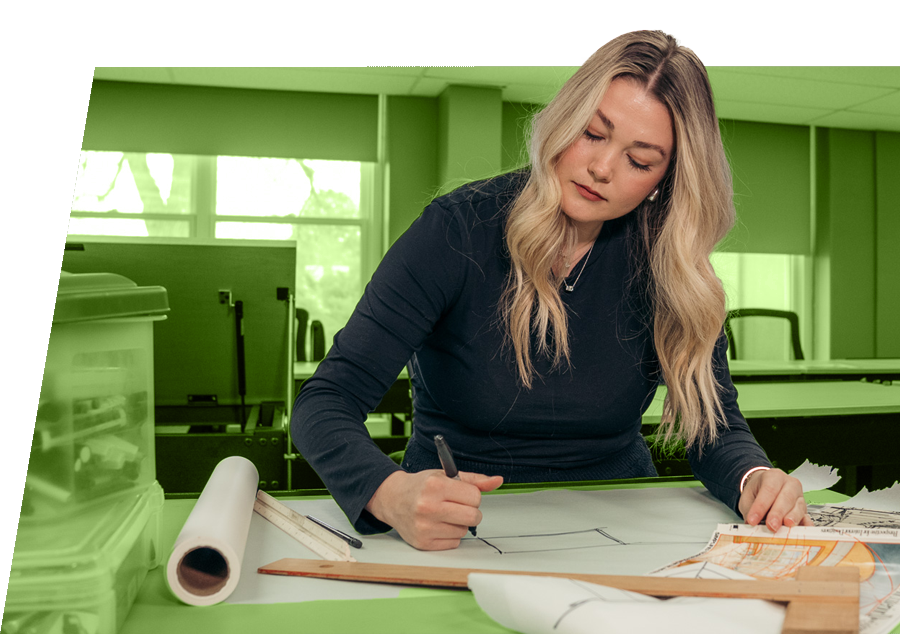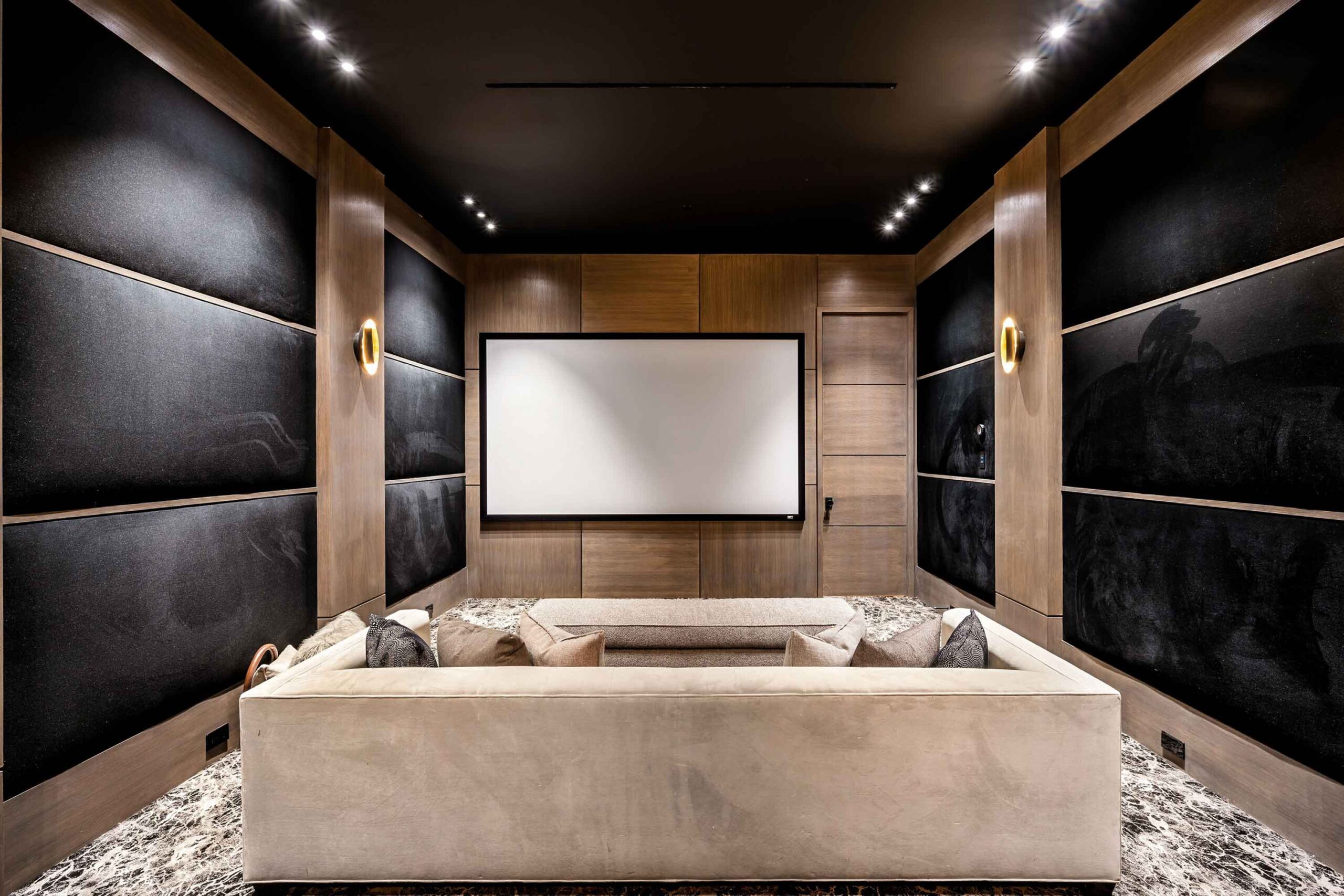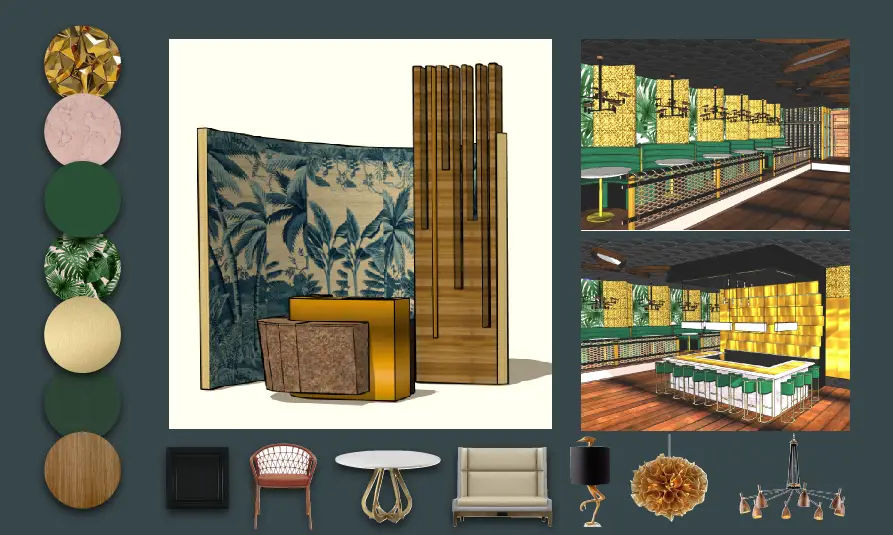INTERIOR DESIGN DEGREE
BACHELOR OF ARTS
"*" indicates required fields
INTERIOR DESIGN DEGREE PROGRAM OVERVIEW
As a student in the CIDA accredited Interior Design Degree Program, you’ll receive hands-on attention from highly qualified instructors who are working industry professionals. You’ll learn the essential elements of interior design on a beautiful, historical campus, including drafting, building systems and construction, technical drawing conventions, interior lighting design, fixtures and equipment, construction document implementation, building codes and regulations, design project management, and much more.
RMCAD’s bachelor’s degree in interior design curriculum encompasses a variety of disciplines that include elements of architecture, environmental design, graphic design, color theory, ergonomics, and industrial design to give interior design degree students a broad base of knowledge to draw upon. There is also a focus on design practices that are environmentally responsible, which can be learned further through the degree’s sustainability specialization.
You’ll graduate confident in the skills you’ve acquired and prepared to successfully enter the field of interior design, with an ethical and mindful eye for design and the planet.

SKILLS YOU'LL LEARN
Hospitality Design
Construction Documents + Contracts
Building Information Modeling, Manual Drafting + Computer Aided Design (CAD)
Environmental + Human Behavior
Space Planning
Lighting Design
STEPS TO ADMISSION

1
Complete your artist meeting with an admissions representative.

2
Submit an admissions application.

3
Create and submit your portfolio to be considered for a scholarship.

4
Submit official high school and college transcripts (for transfer students).

5
Submit the current year’s FAFSA and other financial aid documentation.
ACCREDITATION




TUITION + FINANCIAL AID
At RMCAD, we understand that investing in a college education is a major decision and a major investment. That’s why we offer competitive, affordable tuition when compared to other art and design colleges. Students’ tuition rates are locked in at the time of their initial start date and will not increase as long as they remain enrolled in their program.

INTERIOR DESIGN DEGREE COURSE DETAILS
RMCAD’s BFA interior design degree classes are structured to cumulatively increase in difficulty as the courses progress, in order to help you accumulate the skills necessary to successfully build beautiful, functional spaces.
RMCAD offers classes year-round in both on-campus and online delivery formats. At RMCAD, we believe that online learning is an important part of the overall college learning experience. To provide students multiple scheduling options, diverse learning modalities, and experience in the virtual environment, all on-campus students are required to take part in some online education.
Interior Design Courses (65 Credits)*
ID 1230
Introduction to Sustainable Design
(3 Credits)
ID 2530
Building Codes + Regulations
(3 Credits)
ID 2710
Introduction to Computer Aided Design (CAD)
(3 Credits)
ID 2750
Architectural Perspective and Rendering Techniques
(3 Credits)
ID 3610
Interior Design Professional Practices
(3 Credits)
ID 3715
Building Information Modeling: Revit
(3 Credits)
*This section does not include the full list of courses for this program.
Liberal Arts Courses (39 Credits)*
AH 1110
Art Historical Methods + Theories
(3 Credits)
EN 1110
Composition I
(3 Credits)
MA 1220
Financial Principles + Practices
(3 Credits)
NS 2040
Environmental Studies
(3 Credits)
The Liberal Arts curriculum is an exciting part of every student’s academic and creative journey at RMCAD. These courses provide the opportunity for students to engage with complex questions and ideas to develop critical thinking skills, a global consciousness, and awareness of art historical foundations that are essential for their intellectual, creative, and personal growth.
*This section does not include the full list of courses for this program.
Foundations Courses (15 Credits)*
FD 1020
2D Design: Elements + Principles
(3 Credits)
FD 1120
Topics in Color
(3 Credits)
FD 1235
Observational Drawing
(3 Credits)
FD 2130
3D Design: Space + Materiality
(3 Credits)
Foundation Studies educates students in the development of creative studio practice by fostering individualized and collaborative learning that emphasizes cultural engagement, process, critical thinking, and visual literacy.
*This section does not include the full list of courses for this program.
Interior Design Specialization (6 Credits)*
ID 3550
Custom Furnishings
(3 Credits)
IDSD 4200
Sustainable Design Studio
(3 Credits)
GD 1000
Typography
(3 Credits)
*This section does not include the full list of courses for this program.
Interior Design Sustainable Design Specialization (6 Credits)
IDSD 3200
Sustainable Design Strategies + Technologies
(3 Credits)
IDSD 4200
Sustainable Design Studio
(3 Credits)
IDSD 4250
Sustainable Design Portfolio Review
(0 Credits)
TECH + TOOLS
Interior designer degree students will learn the latest technology in the interior design field, including Adobe, CAD, and Revit.All RMCAD students receive access to the Adobe suite during their education through their semester fees.
On campus, you will have access to an interior design materials resource room, computer labs, and drafting classrooms.

Interior Design Stories

Designing Interiors for Multi-Generational Living: Balancing Privacy and Connection
Across the United States, a housing trend known as multi-generational living is gaining popularity. Multi-generational living refers to a situation where two or more adult generations of a family share the same household. This could

The Role of Acoustics in Interior Design: Balancing Sound and Style
Interior design brings beauty and comfort to spaces. This field tends to bring visual qualities to mind, but there is far more to interior design than what meets the eye. Sound design also matters but

Designing Spaces for Hybrid Work: Blending Home and Office Aesthetics
Years ago, the home office was designed for busy and motivated professionals who put in extensive hours outside the traditional business day. However, the COVID-19 pandemic ushered in a new era for employees, one in
INTERIOR DESIGN CAREERS
RMCAD Interior Design graduates are making their mark one great looking space at a time across several industries. Take a look at potential career opportunities!
Healthcare Design
Healthcare design incorporates interior design and medical research to construct human-centered spaces that promote health and wellness.
Hospitality Design
Hospitality design focuses on the interior design of commercial spaces such as hotels, restaurants, bars, and spas.
Residential Design
Residential design focuses on home spaces including single-family, multi-family, condos, and townhomes. It combines aesthetics and functionality to create welcoming spaces that are both safe and sustainable to live in.
Institutional Design
Institutional design focuses on the design of government buildings, colleges, museums, libraries, and other public spaces.
Commercial Design
Commercial design encompasses a wide range of businesses that include offices, hotels, retail stores, restaurants, and more.
FREQUENTLY ASKED QUESTIONS
What is the focus of the Interior Design Degree Program at RMCAD?
The program focuses on creating inspiring, functional spaces through courses in drafting, CAD and BIM technology, rendering, furniture selection, lighting design, building codes, and project management.
What career opportunities are available for interior design graduates?
Graduates will acquire the knowledge and skills to start careers as interior designers, space planners, lighting designers, project managers, CAD and BIM specialists, and design consultants.
What are the key components of the Interior Design Program?
Key components include hospitality design, construction documents, manual drafting, CAD and BIM, environmental and human behavior, space planning, and lighting design.
Why is a CIDA or Council for Interior Design Accreditation program so important?
It’s extremely valuable for an interior design student to pursue a college or program path that is CIDA accredited because the Council for Interior Design Accreditation carefully reviews interior design programs to ensure graduates are prepared for entry level practice and are set up for future professional growth. We are proud to be one of the few CIDA accredited programs that offer both online and on campus learning modalities. To learn more, visit CIDA.
What skills will students learn in the Interior Design Program?
Students will learn drafting, rendering, space planning, interior lighting design, construction document implementation, as well as CAD and BIM skills.
How does RMCAD support interior design students?
RMCAD offers personalized instruction from industry professionals, well-equipped facilities, and opportunities for hands-on projects and exhibitions. Campus students will have access to the resource room, which houses physical samples of interior design materials and products provided by manufacturers and suppliers.
All students also receive software licensing, a LinkedIn Learning subscription, LMS access, electronic library resources, cybersecurity, mental health counseling, and tutoring services through their semester fees.
What are the admission requirements for the Interior Design Degree Program?
Applicants need a high school diploma or equivalent and completion of the college’s application process. To be considered for a scholarship, students will also need to create and submit a portfolio of artwork.
What kind of portfolio should students submit for the Interior Design Program application?
A portfolio showcasing your best design work, including examples of drafting, space planning, and interior design projects.
Are there any specializations within the Interior Design Program?
Yes, the program includes a specialization in sustainable design where students learn about sustainability as a part of ethical design practice.
What software and tools are used in the Interior Design Program?
Students use CAD systems, Revit, Adobe Creative Suite, and other industry-standard software for design and drafting. For more information on program materials, visit here.
Can students visit the campus to learn more about the Interior Design Program?
Yes, prospective students can schedule campus tours or attend info sessions to learn more about RMCAD and the interior design program.
What are the Liberal Arts requirements in the Interior Design Program?
The curriculum includes courses that develop critical thinking, global consciousness, and information literacy.
What are the Foundations requirements in the Interior Design Program?
Foundation courses enable students to refine essential skills, get comfortable with the tools they’ll use throughout their program, and study relevant basics— including composition and color theory. These courses facilitate ideation and collaboration.
What kind of student work is produced in the Interior Design Program?
Students create construction documents, space plans, lighting designs, and comprehensive interior design projects.
What is the importance of sustainable design in the Interior Design Program?
Sustainable design practices are emphasized to create environmentally responsible and ethical interior design solutions.
Are there opportunities for students to showcase their work?
Yes, students can participate in exhibitions, portfolio reviews, and gallery shows (campus and virtual) to display their designs and gain exposure.
What makes RMCAD's Interior Design Program unique?
This CIDA accredited program’s integration of technical and creative coursework, focus on sustainable design, individualized support, and professional development sets it apart.










